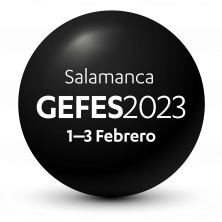
Rebeca Ribeiro is a tenured scientist at the C2N – Paris Saclay and CNRS and the latest member of the group Phynano. She obtained her bachelor degree from the University of Carabobo in Venezuela, her PhD in Physics from the University Paul Sabatier in Toulouse and was a postdoctoral research associate at the French National Metrology Lab (LNE) followed by a MRSEC fellowship at Columbia University.
Rebeca shows great interest in unraveling the fundamental properties of topological states on 2D materials.
Title: Non-identical moiré twins in bilayer graphene
Abstract: The superlattice obtained by aligning a monolayer graphene and boron nitride (BN) inherits from the hexagonal lattice a 60∘ periodicity with the layer alignment. This implies that the mechanical, optical and electronic properties of the heterostructure must be identical for 0∘ and 60∘ of layer alignment. Surprisingly, this periodicity apply only for the monolayer case. In this talk, I will show you that the moiré superlattice formed by a bilayer graphene aligned with BN, is present every 60∘, but the symmetry is broken between the 0∘ and 60∘ alignments, creating non-identical moiré twins with different electronic properties. In particular, electron transport measurements display a fully developed valley Hall effect at 0∘ while it is completely absent at 60∘. The origin of the non-identical moiré twins is explained by studying the relaxation of the atomic structures using state-ot-the-art numerical techniques, which highlight the central role of the Bernal stacking configuration with respect to the BN layer. Our results challenge the current understanding of the valley Hall effect, since a simple Berry curvature argument do not hold to explain this 120∘ periodicity in bilayer graphene/BN. This unique interplay between mechanical and electronic properties, demonstrated by the in situ control of the rotational order, increases the possibilities for band-structure engineering on van der Waals heterostructures.
